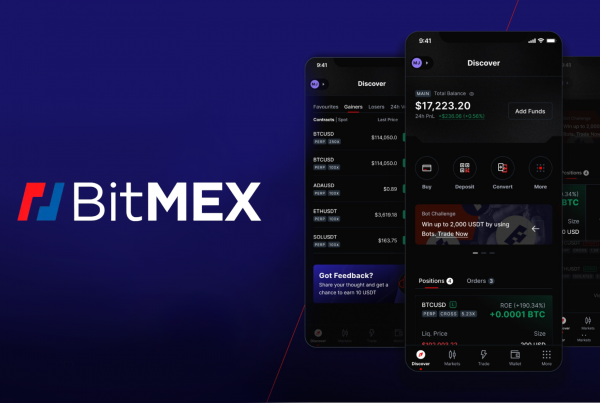
The rise of cryptocurrency has attracted tech enthusiasts and investors alike, however, with billions of dollars traded daily it has also become a popular space for malicious actors. Cryptocurrency platforms and exchanges are the backbone of the digital asset market, providing a way for users to trade cryptocurrencies for fiat money or other digital assets. Their central role in facilitating these trades make them attractive targets for scammers. A study identified over 1,500 scam domains in more than 300 fake apps that were impersonating legitimate exchanges—these scams have collectively caused financial losses exceeding $520,000 (Xia et al., 2020).
One popular method of a platform or exchange scam is typosquatting where scammers will create domains that are nearly identical to legitimate exchange and platform websites when unsuspecting users mistype a URL they are then redirected to these fraudulent sites where their credentials and/or assets are stolen. Similarly, another growing threat are fake apps which often mimic official platforms or exchange apps using identical interfaces. These mobile apps are found on legitimate app stores thus further blurring the line between legitimate and scam platforms (Xia et al., 2020).
While decentralization is a hallmark of blockchain technology offering both privacy and autonomy, this also creates risk. Decentralized exchanges have become attractive targets for scammers because they allow peer to peer trading without intermediaries This lack of a centralized oversight means that users oftentimes must verify the legitimacy of transactions on their own (Aspris et al., 2020; Liu et al., 2019). Furthermore, tracking illicit activities is challenging because of the anonymity provided by cryptocurrency. Blockchain’s immutability ensures that once a transaction is confirmed it is not reversible, a feature that scammers can exploit to their advantage (Kuo et al., 2017; Liu et al., 2019).
Scammers can also leverage different psychological tactics to manipulate their victims. For example, fear of missing out (FOMO) is a powerful motivator in trading and price volatility in the cryptocurrency market contributes to a sense of urgency and FOMO. Scammers will capitalize on FOMO to promote fake investment opportunities such as fraudulent initial coin offerings (ICOs) or pump-and-dump schemes. In a pump-and-dump scheme, the price of a low value cryptocurrency will be artificially inflated by the scammers through the spread of misleading information. Once the price of the cryptocurrency peaks, the scammers sell their holdings and leave other investors with worthless crypto tokens. These schemes exploit something called “herding behaviour” where traders often blindly follow perceived market trends without verifying their legitimacy using outside reputable sources (Liu et al., 2018; Liu et al., 2019)
Investor sentiment also plays a significant role in cryptocurrency trading. Studies have shown that positive sentiments (often measured using search trends or social media activity) can actually drive price changes—not only for Bitcoin but also for altcoins (Anamika & Subramaniam, 2021). Scammers will exploit this dynamic by creating fake videos or news articles to further manipulate market perception (Anamika & Subramaniam, 2021). For example, there have been deep fake videos created of Elon Musk and other prominent figures endorsing fake investment schemes. Videos like these leverage the trust associated with prominent figures and convince victims to invest in scams as a result (Xia et al., 2020).
Some examples:
1. Typo-squatting:
- A well-known exchange was targeted by a typo squatting domain that collected login credentials from unsuspecting users. upon login users found that their accounts were drained and inaccessible (Xia et al., 2020).
2. Fake apps on google play:
- A fraudulent app that impersonated a top cryptocurrency exchange was downloaded by thousands of users prior to its removal the app not only collected login credentials but also installed malware to access sensitive information (Xia et al., 2020).
3. Phishing:
- Scammers impersonate exchange representatives on platforms such as X (formerly Twitter) promising to double their cryptocurrency deposits and only once victims have sent funds to the wallet addresses have they realized they had been duped.
With scams becoming increasingly sophisticated and technology advancing, vigilance navigating the cryptocurrency space is vital. Here are some steps to help you safeguard your investments:
1. Verify URLs and apps
- Always double check the website URL for accuracy.
- Use bookmarks for frequently visited platforms and exchanges.
2. Enable Two-factor Authentication (2FA)
- Add an extra layer of security by enabling 2fa on your exchange and platform accounts
3. Beware of unsolicited messages
- Avoid clicking links or responding to messages from unknown sources especially those offering investment opportunities.
4. Educate yourself
- Stay informed about common scam tactics.
- Follow trusted news sources and Community forums for updates
5. Report scams
- If you encounter suspicious activity report it to the relevant platform or exchange and warn others in the community
As the cryptocurrency market further matures, combating scams requires collective effort from the community. Platforms and exchanges must use enhanced security measures such as employing fraud detection and offering additional security features like trusted device notifications. At Newton Crypto Ltd, we take security seriously and offer multiple options for customers to help step up their account security through our security checklist including: multi-factor authentication, trusted device registration, login activity, and anti-phishing codes to authenticate any communications from us. As an investor, ensure you remain aware and act with caution when transacting and cryptocurrency. Always do your own research.
References
Anamika, M. C., & Subramaniam, S. (2021). Does sentiment impact cryptocurrency? Journal of Behavioral Finance, 24(2), 202–218. https://doi.org/10.1080/15427560.2021.1950723
Aspris, A., Foley, S., Svec, J., & Wang, L. (2020). Decentralized exchanges: The “wild west” of cryptocurrency trading. SSRN Electronic Journal. https://doi.org/10.2139/ssrn.3717330
Kuo Chuen, D. L., Guo, L., & Wang, Y. (2017). Cryptocurrency: A new investment opportunity? SSRN Electronic Journal. https://doi.org/10.2139/ssrn.2994097
Liu, Y., Tsyvinski, A., & Wu, X. (2019). Common Risk Factors in Cryptocurrency. https://doi.org/10.3386/w25882
Liu, Y., & Tsyvinski, A. (2018). Risks and Returns of Cryptocurrency. https://doi.org/10.3386/w24877
Xia, P., Wang, H., Zhang, B., Ji, R., Gao, B., Wu, L., Luo, X., & Xu, G. (2020). Characterizing cryptocurrency exchange scams. Computers & Security, 98, 101993. https://doi.org/10.1016/j.cose.2020.101993



